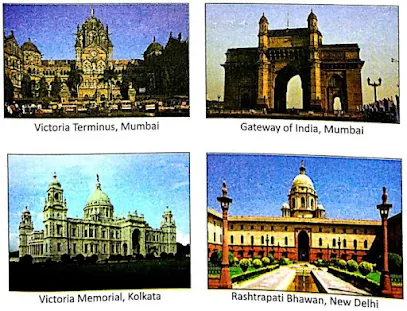The Modern Period- History Guide for Class 8

Information about The Modern Period
Title | Growth of The Modern Period |
Class | Class 8 |
Subject | Class 8 History |
Topics Covered |
|
Now, we are going to learn about the Modern Period of Indian history which began in the eighteenth century, after 1707, when the Mughal Emperor Aurangzeb breathed his last. The crumbling of the old system gave place to new ideas and many new powers emerged on the political horizon of India.
The ever-changing political scenario heralded the dawn of Modern Period, especially with the coming of the Europeans to India. During this period, India was exploited politically, socially, economically and culturally. The East India Company was established as a trading company. But it took advantage of the political instability and gradually, took over the control of a large part of India. In 1858, the power went into the hands of the British Crown.
The nineteenth century witnessed various measures adopted by the East India Company to extend and consolidate its control over India like military action, introduction of railways, postal service, passing different Acts, etc. The Revolt of 1857 was a major event but the colonial power suppressed it ruthlessly. The British rule continued over India but the discontentment against the colonial power strengthened the national movement. The establishment of the Indian National Congress in 1885 had far reaching effects.
The major events of the twentieth century India were the Partition of Bengal, Formation of Muslim League, Home Rule League, Jallianwala Bagh Massacre, etc. The British government also introduced a series of reforms to pacify Indians and to weaken the freedom struggle. But India was able to end the British rule and gain independence in 1947 under the leadership of Mahatma Gandhi and many other national leaders. Unfortunately, India was divided into two countries—India and Pakistan.
Sources of Information

The remains of the past like old buildings, artifacts, inscriptions, books and other documents are of great help in reconstructing the history of the Ancient and the Medieval Period.
Let us have a look at the sources of information of the Modern Indian History which are preserved in archives. You can see them and read most of them.
- British Document: The British ruled over India for almost 200 years. The records of reforms--Morley-Minto Reforms (1909) , Report of the Simon Commission (1929), the Government of India Act (1935), etc., are important sources of information. They tell us about the condition of the people as well as administration of that time. Similarly, we get a lot of information from the various Bills like the Ilbert Bill, the Arms Bill, etc., that were passed by the British Parliament.
- Books: Many books were written and printed during this period. They are preserved in public and private libraries. Most books like Anandmath by Bankim Chandra Chattopadhyay, My Experiments with Truth by Mahatma Gandhi, Unhappy Indian by Lala Lajpat Rai, etc., are available even now, as they have been reprinted from time to time. They are an important source of information of the modern period. The poetry/prose/drama/stories/autobiographies/biographies written in this duration give us an insight into the conditions of that time.
- Letters, writings, speeches, etc.: They provide information about the developments that take place during a particular period. For example, the collection of writings of Gandhiji at the Gandhi Smriti near Rajghat, which is one of the biggest museum on Gandhiji, has a library with around 60,000 books. It also has about 6,000 original photographs of Gandhiji. 'Freedom is our birth right', the slogan given by Bal Gangadhar Tilak and the call given by Netaji Subhash Chandra Bose, 'You give me blood and I will give you freedom' and many other slogans tell us about the patriotic feelings and the national fervour during our struggle for independence.
- Newspapers: The London Times, Bombay Times and vernacular papers like Bal Gangadhar Tilak's Kesari in Marathi, Amrita Bazar Patrika in Bengali are important sources of the history of modern period.
- Administrative reports of the Government: Administrative reports of the Government on tribes, castes and land revenue settlements are also very important sources of information. The basic objective behind the surveys and reports of the British government was to learn about India before it could be administrated effectively. For example, report on the survey and settlement operations in the District of Champaran (1913-19) in Bihar.
- Internet or Databases: Internet or database like Digital South Asia Library and the British Library's Oriental and Indian Office Collections provide us a lot of information.
- Old buildings, artifacts and people: The architectural style of old buildings, artifacts and people of that period also tell us the tales of the past. Many people, who participated in the freedom struggle and saw the important changes, share their experiences which throw light on the life of the people and the conditions that existed.

